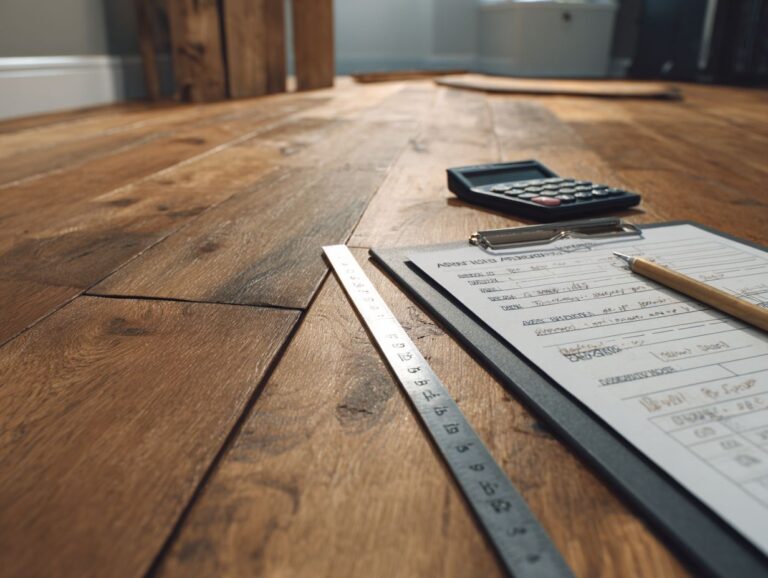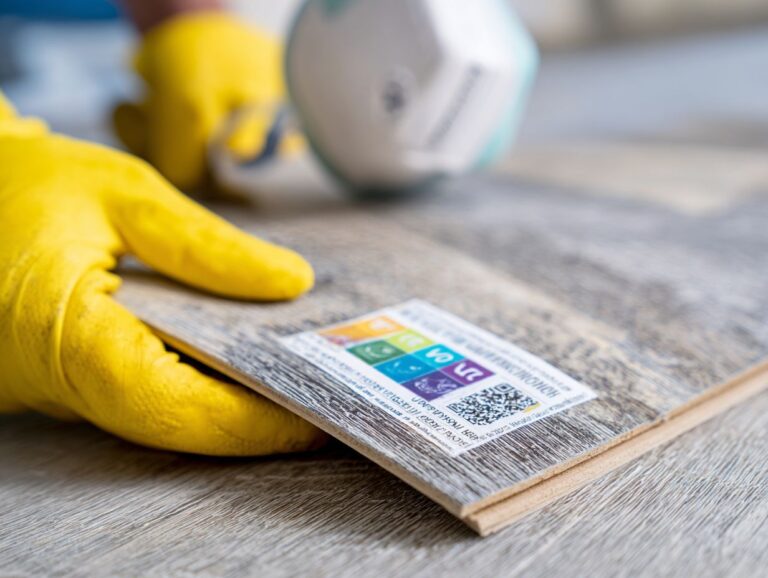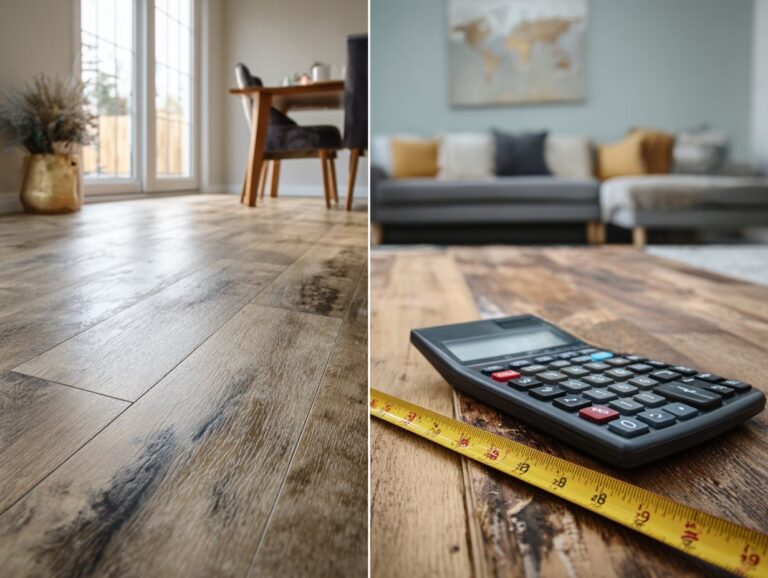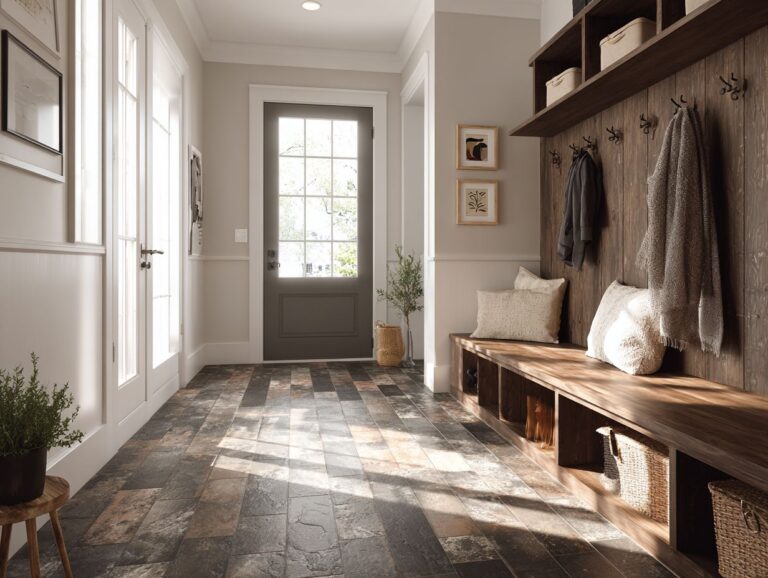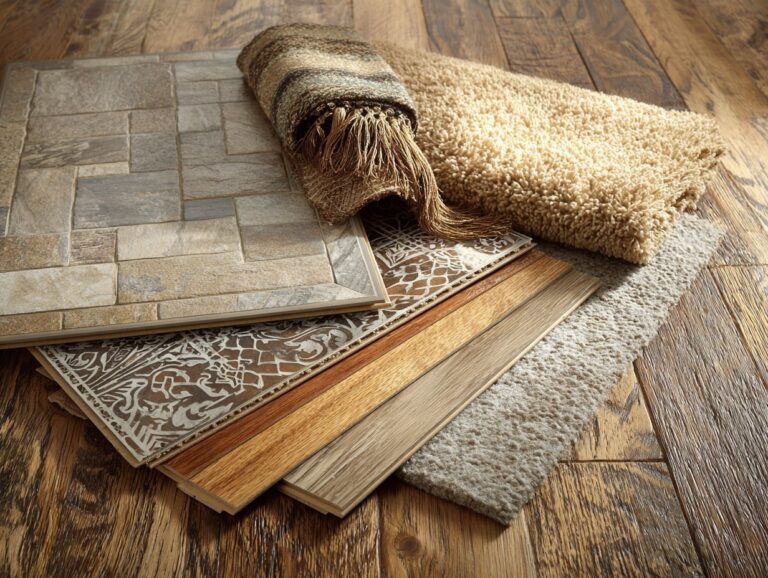Commercial vs Residential Grade Vinyl – Key Differences
Choosing between commercial and residential vinyl flooring can greatly affect both how long it lasts and its appearance. Knowing the main differences between these two kinds of vinyl flooring is important for choosing the option that suits your needs. This article looks at the special features, uses, and performance of flooring for homes and businesses, so you can pick the best choice for your area.
Key Takeaways:
Contents
- Understanding Commercial Grade Vinyl
- Understanding Residential Grade Vinyl
- Key Differences Between Commercial and Residential Grade Vinyl
- Performance Factors
- Vinyl Flooring Market Statistics
- Frequently Asked Questions
- What is the difference between commercial and residential grade vinyl?
- Can I use commercial grade vinyl in my home?
- What types of buildings are best suited for commercial grade vinyl?
- Is commercial grade vinyl more expensive than residential grade vinyl?
- Can I install residential grade vinyl in a commercial setting?
- What are the design options for commercial and residential grade vinyl?
Definition of Vinyl Flooring
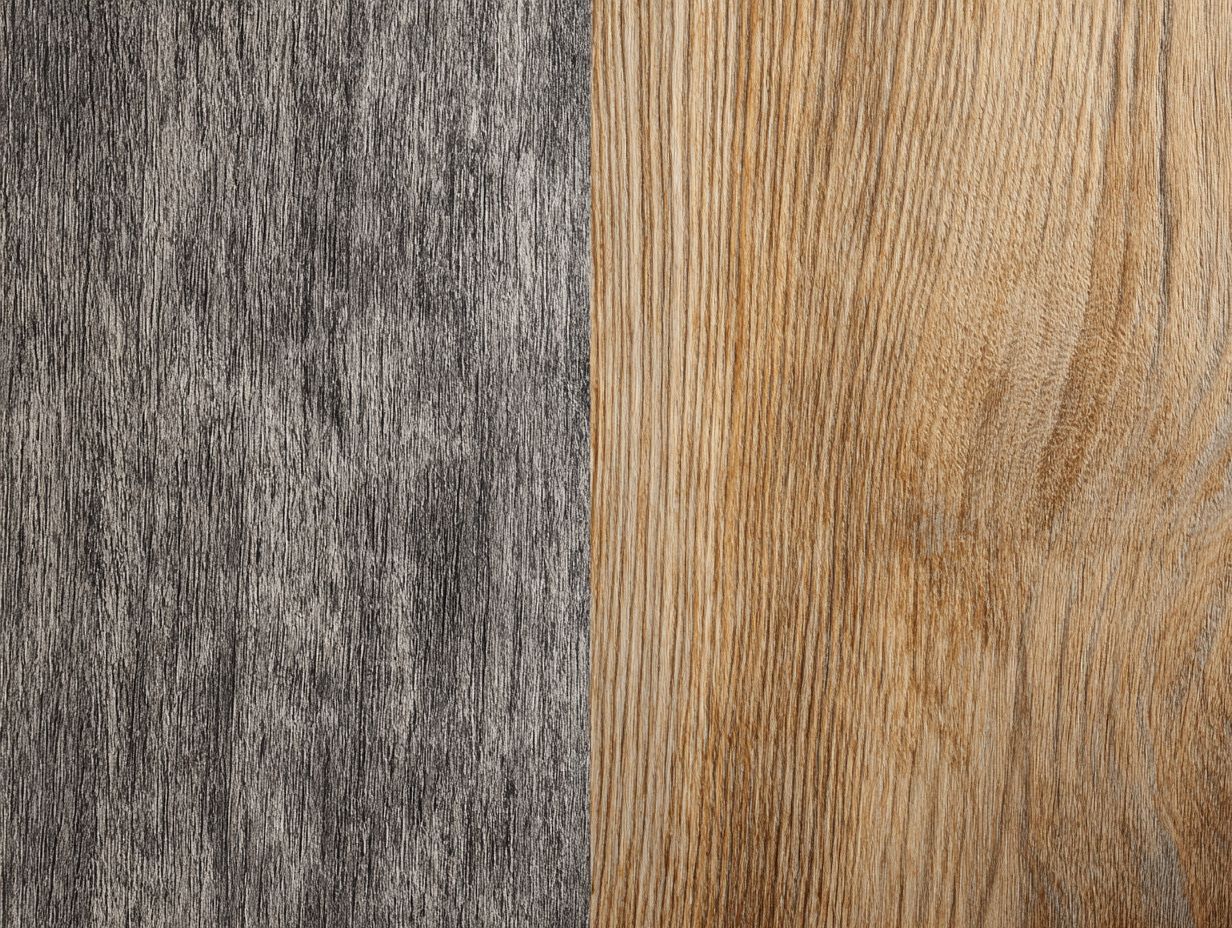
Vinyl flooring, primarily made from Polyvinyl Chloride (PVC), is engineered to offer a resilient surface ideal for high foot traffic areas.
This flooring type comes in various forms, including vinyl tiles, sheets, and luxury vinyl planks (LVP). Vinyl tiles are easy to install and can mimic the look of natural stone, while sheets provide a seamless surface, reducing water penetration.
LVP offers the look of hardwood and the toughness of vinyl, working well for homes and businesses.
When selecting vinyl flooring, think about how it is installed, how long it lasts, and how well it handles water to make sure it suits your needs.
Importance of Choosing the Right Grade
Choosing the right vinyl flooring for homes or businesses is important to make sure it holds up and works well, depending on how much people walk on it.
Residential vinyl is typically designed for lower traffic areas, offering aesthetic appeal and comfort at a lower cost. It’s ideal for homes or apartments where wear is minimal.
On the other hand, commercial vinyl is built to handle more people walking on it, which makes it ideal for businesses, shops, and schools. It often includes extra durability features like thicker wear layers.
If you’re renovating a busy restaurant or an office space, opt for commercial vinyl to reduce maintenance costs and extend the flooring’s life. Think about what you need before deciding.
Understanding Commercial Grade Vinyl
Commercial grade vinyl is made to handle heavy use, which makes it a popular option for businesses and places with a lot of people walking through. To further understand the durability and benefits of various flooring options, you might find it helpful to explore our guide on laminate flooring construction and benefits.
Characteristics of Commercial Grade Vinyl
Commercial grade vinyl usually has a thicker wear layer, often more than 20 mils, which makes it more durable and resistant to scratches.
For example, Timeworn Plank by Karndean has a 30 mil wear layer, which makes it great for areas with a lot of foot traffic. In contrast, Shaw’s Luxury Vinyl Tile features a 20 mil layer, sufficient for residential use but less so for busy commercial spaces.
Both options boast moisture and stain resistance, but when choosing, consider your specific needs. A space that sees frequent spills would benefit more from the Karndean product. Evaluating the setup environment will help you choose correctly.
Durability and Longevity
With proper maintenance, commercial grade vinyl can last between 15 to 20 years, significantly outperforming many other flooring types.
To maximize its lifespan, consider foot traffic and regular maintenance practices. For example, using a vacuum instead of a broom prevents dust buildup that can scratch the surface.
Applying a protective sealant every 2-3 years helps it last longer and stops damage. Statistics show that areas with high foot traffic tend to show wear sooner, but routine cleaning and employing entrance mats can mitigate this.
Following these steps helps your vinyl last longer and keeps it looking and working well.
Common Applications
Common applications for commercial grade vinyl include healthcare facilities, retail spaces, and educational institutions, where durability is paramount.
In healthcare settings, commercial-grade vinyl is durable enough for frequent cleaning and heavy foot traffic, making it a suitable option for hospitals and clinics.
Retail spaces benefit from its flexible appearance, allowing custom designs that strengthen branding and resist wear and tear.
For educational institutions, such as schools and universities, the material’s sound absorption qualities reduce noise, creating better learning environments.
By selecting a reliable brand like Armstrong or Mannington, facilities can expect the floors to last more than 10 years, which helps save on replacement expenses. Curious about how vinyl flooring’s wear layer affects its durability? Our guide explains the key factors.
Maintenance Requirements
Regular maintenance, including daily cleaning and occasional deep cleaning, is essential to keep commercial grade vinyl flooring in optimal condition.
For daily upkeep, use a soft-bristle broom or a microfiber mop to prevent dirt buildup. It’s best to clean spills immediately with a gentle pH-neutral cleaner, such as Bona Stone, Tile & Laminate Floor Cleaner.
Make sure to clean your vinyl floor thoroughly every 6 to 12 months. Use a vinyl floor cleaner and a machine scrubber to get rid of all dirt.
Check for marks or damage on the vinyl floor and fix them quickly using a repair kit to keep it looking perfect.
Understanding Residential Grade Vinyl
Residential vinyl is made for areas with less foot traffic, focusing on comfort and appearance to improve home interiors.
Characteristics of Residential Grade Vinyl
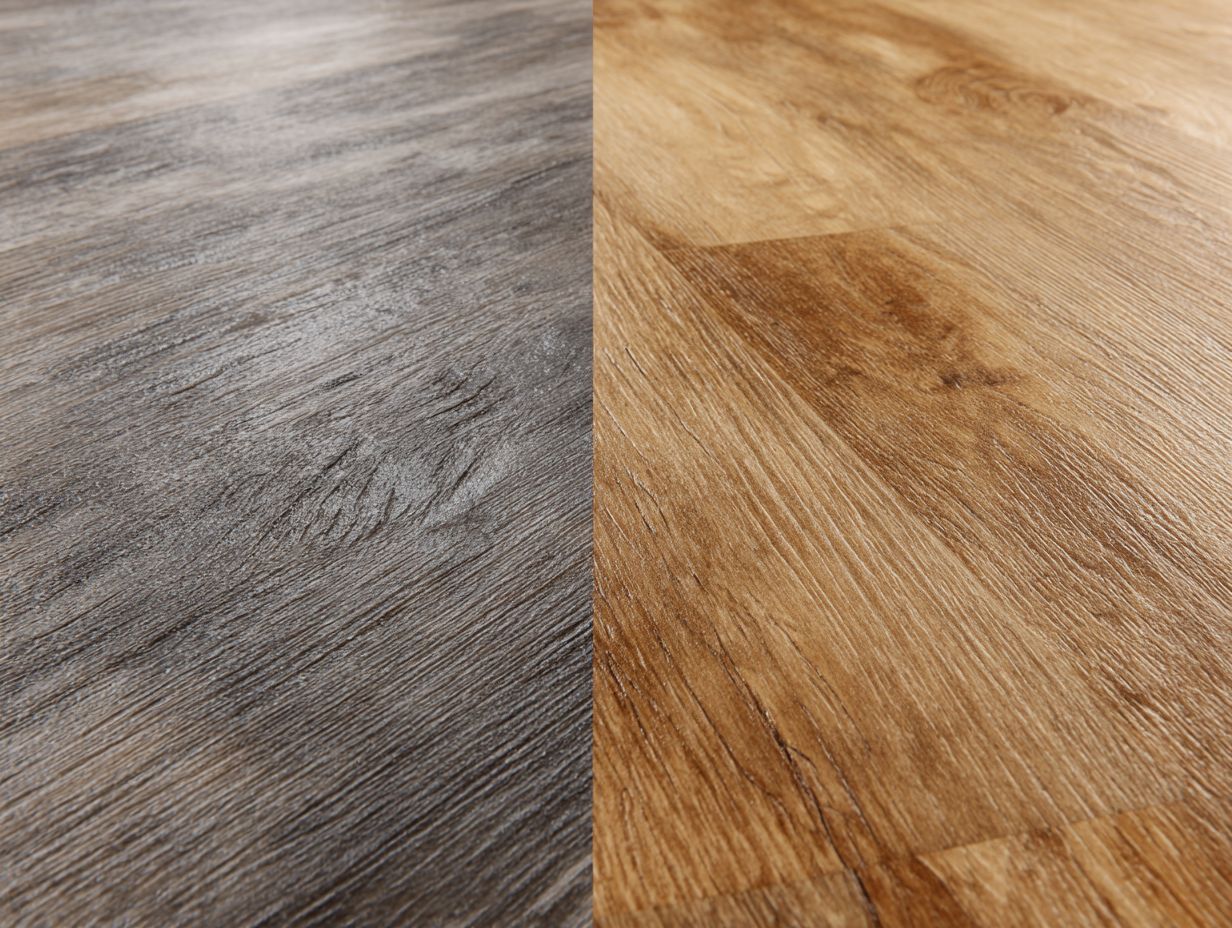
Residential grade vinyl typically features softer backing materials, providing added comfort underfoot and a variety of design options.
These vinyl options often mimic the appearance of natural materials like hardwood or stone, offering a polished look without the maintenance.
For instance, styles such as wood-look vinyl provide warmth and charm, while stone-look variants add a contemporary edge to spaces.
Homeowners can also choose from various colors and textures to seamlessly integrate the flooring with existing dcor.
Brands like Mohawk and Shaw offer collections that cater to modern aesthetic preferences, ensuring compatibility with diverse interior styles.
Durability and Longevity
Residential grade vinyl generally offers a lifespan of 10 to 15 years, contingent upon proper installation and maintenance practices.
To maximize durability, focus on the following maintenance tips:
- Regularly clean the surfaces using a gentle detergent to remove dirt and grime.
- Prevent scratches by using furniture pads.
- Avoid placing hot objects directly on the vinyl.
Consider investing in commercial-grade vinyl if longevity is a priority; it typically lasts 15 to 20 years and includes stronger UV resistance.
Applying a sealant every few years can protect your floor from damage, making it last longer.
Common Applications
Typical applications for residential grade vinyl include living rooms, kitchens, and bathrooms, where aesthetics and comfort are prioritized.
In living rooms, consider using vinyl with a wood look, such as a weathered oak pattern in warm beige or grey tones, to create a cozy atmosphere.
In kitchens, choose mosaic vinyl designs in bright colors, like teal or mustard, which can make the space lively and are long-lasting.
For bathrooms, herringbone patterns in soft blues or greens lend a soothing feel while offering water resistance.
By choosing designs that match your decor, you can improve both the look and usefulness of each room.
Maintenance Requirements
Maintaining residential grade vinyl involves regular sweeping, occasional mopping, and the use of suitable cleaning agents to preserve its appearance.
To effectively maintain vinyl flooring, establish a cleaning schedule that includes daily sweeping with a soft-bristle broom to prevent scratches.
For deeper cleaning, mop with a solution of warm water and a few drops of gentle dish soap biweekly. Avoid harsh chemicals like ammonia or bleach, as they can damage the surface.
To get rid of tough stains, use a soft cloth with vinegar or a paste made of baking soda. Gently scrub the spot and then rinse it.
Consider placing mats in high-traffic areas to minimize wear and tear.
Key Differences Between Commercial and Residential Grade Vinyl
Knowing the main differences between commercial and residential vinyl is important for choosing the right flooring for your needs. To make an informed decision, it’s crucial to understand the durability aspects of these materials. Learn more about the wear layer and durability of vinyl flooring to ensure it suits your specific requirements.
Material Composition
Commercial grade vinyl typically consists of superior PVC and additives aimed at improving performance under pressure.
These enhancements, such as performance enhancers and strong UV stabilizers, significantly increase durability and resistance to wear.
For example, commercial vinyl is durable enough to withstand heavy foot traffic and tough weather, making it ideal for businesses such as hotels and retail stores. On the other hand, home-use vinyl doesn’t have these strong features and can fade and scratch more easily.
Think about how much the floor will be walked on and what environmental conditions it will face to make sure you pick the right type for your situation.
Thickness and Wear Layer
Commercial grade vinyl typically boasts a thicker wear layer (20-30 mils), compared to the 6-12 mils found in residential grade options.
This significant difference in thickness directly influences durability and maintenance. For example, Armstrong’s Vivero is a type of commercial vinyl flooring with a 20 mil wear layer, ideal for places with lots of foot traffic. On the other hand, Shaw’s Resilient Vinyl has a 12 mil wear layer, which is suitable for homes.
Generally, thicker layers resist scuffs and tears better, requiring less frequent refinishing. In the end, when choosing vinyl flooring, think about how much the area is used: areas with less use can use thinner flooring, while busy commercial spaces should use thicker flooring for long-lasting results.
Cost Comparison
Commercial grade vinyl can range from $3 to $7 per square foot, while residential grade typically costs between $2 to $5 per square foot.
When selecting vinyl flooring, consider factors such as durability, installation method, and long-term maintenance.
For example, while commercial grade offers superior durability ideal for high-traffic areas, the residential option is budget-friendly for home use. Installation costs can add $1 to $5 per square foot, affecting the total budget.
If you choose to install it yourself, tools like a utility knife for cutting and a vinyl roller for smoothing can save on labor costs.
Check local suppliers for bulk purchase discounts to maximize savings.
Design Options and Aesthetics
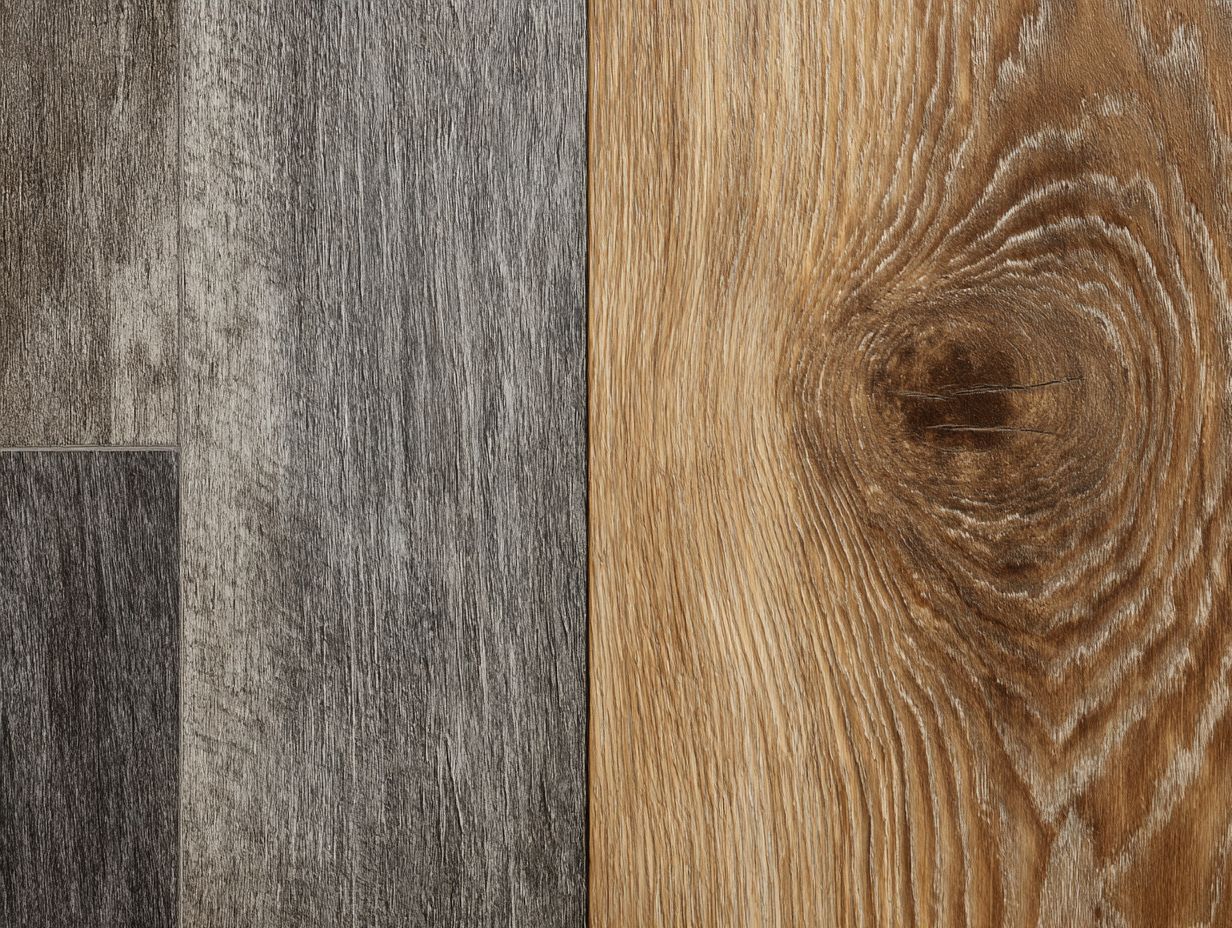
Residential grade vinyl often showcases a wider variety of colors and patterns, catering to diverse aesthetic preferences for home interiors.
This choice improves the appearance of a room and makes it easy for homeowners to customize their spaces.
For example, choices include finishes that look like wood and also bright, modern designs. Homeowners can create a cozy atmosphere using warm tones or opt for a sleek, modern look with gray or black patterns.
Many manufacturers offer custom printing, enabling the integration of unique artwork or photography into the flooring. Such flexibility makes residential vinyl a good option for any style, whether it’s in living rooms, kitchens, or even bathrooms.
Performance Factors
Factors like resistance to heavy use and ability to withstand water play a big role when choosing between vinyl flooring for businesses and homes.
Foot Traffic Resistance
Commercial grade vinyl is engineered for higher foot traffic, ensuring it maintains its appearance and performance under stress.
This type of vinyl typically features a thicker wear layer, often around 20 mils, which resists scratches and stains better than residential options, usually around 12 mils.
For example, in a busy retail store, a commercial grade vinyl can deal with shopping carts and heavy foot traffic without getting damaged, making it suitable for such places.
Brands like Armstrong and Shaw Flooring offer collections specifically designed for high-traffic areas, providing both durability and aesthetic appeal.
Regular upkeep, such as weekly sweeping and a deep clean each month, will make it last longer.
Water Resistance and Maintenance
Both commercial and residential vinyl offer water-resistant properties, but commercial grades are typically designed to withstand spills more effectively.
Commercial vinyl flooring usually has a thicker protective layer, which makes it better at handling moisture and lots of people walking on it.
For instance, a product with a wear layer of 20 mil provides significantly better protection against spills than residential options with 6 mil.
To maintain these properties, regular cleaning with a pH-neutral vinyl cleaner is essential, as harsh chemicals can degrade the surface.
Putting a sealant on your floor every few years helps it last longer by keeping water out of the subfloor.
Making the Right Choice for Your Needs
When choosing flooring, think about how much people walk on it, how easy it is to clean, and your design tastes to find what works best for your area.
-
Start by evaluating foot traffic. High-traffic areas like hallways benefit from durable options like luxury vinyl planks, which offer scratch resistance and long-term performance.
-
For maintenance, look for products that require minimal upkeep; water-resistant vinyl is ideal for kitchens and bathrooms.
-
Choose designs that match your style; wood-look vinyl can match a warm, traditional home, while bright patterns might fit a modern setting.
By focusing on these criteria, you can choose vinyl flooring that meets your functional and design needs.
Future Trends in Vinyl Flooring
The direction of vinyl flooring is moving towards using environmentally friendly materials and new designs that meet changing customer tastes.
Manufacturers are increasingly adopting sustainable materials like recycled PVC and bio-based plastics, which reduce environmental impact.
Technologies like advanced digital printing enable realistic designs that look like natural materials, offering beauty without harming the environment.
For instance, products like Karndean’s Van Gogh range showcase wood and stone visuals while ensuring durability and ease of maintenance.
Advancements in manufacturing processes mean vinyl can now be produced with low-VOC emissions, aligning with health-conscious consumer demands.
These trends show dedication to sustainability and improve how consumers feel about the product.
Vinyl Flooring Market Statistics
Vinyl Flooring Market Statistics
Global Market Overview: Market Size
Global Market Overview: Growth Rate
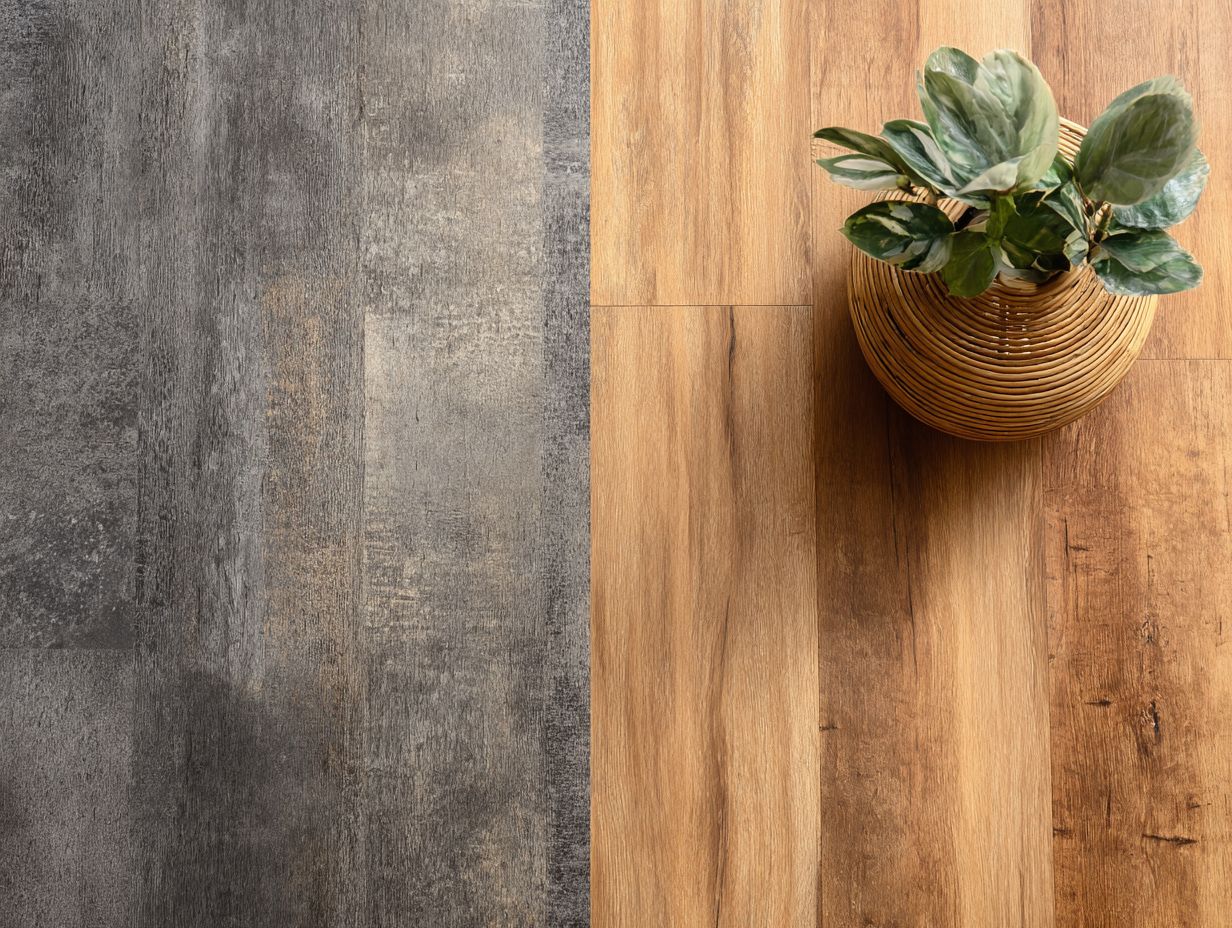
The Vinyl Flooring Market Statistics give a detailed summary of market trends, which include growth paths, expected market sizes, and regional market shares. These are key for grasping industry trends and finding where to invest.
Global Market Overview illustrates the significant expansion of the vinyl flooring market, starting with a 2023 market size of $36.63 billion. This growth is projected to continue, with estimates of $39.19 billion in 2024, reaching $66.94 billion by 2032. An interesting anomaly appears in the 2025 market size, projected at $25.4 billion, which perhaps indicates adjustments or corrections in market estimations. By 2034, the market is anticipated to stabilize at $43.47 billion.
The Compound Annual Growth Rate (CAGR) from 2024-2032 is 6.8% showing strong growth thanks to the need for long-lasting and affordable flooring options. From 2025-2034, the CAGR slightly decreases to 5.52%, potentially reflecting market saturation or shifts in consumer preferences.
- Regional Insights: The Asia Pacific region holds a dominant 33.93% market share In 2023, the country’s strong manufacturing base and growing consumer demand are supported by fast city growth and construction projects. Meanwhile, North America claims a 13.9% market share, with steady demand driven by renovation projects and new constructions emphasizing aesthetic appeal and sustainability.
The insights into the Vinyl Flooring Market Statistics highlight the sector’s potential for growth and the varying regional influences impacting market trajectories. Companies and investors can use these statistics to make informed decisions, concentrating on expanding in fast-growing regions like Asia Pacific and responding to market changes expected in the next few years.
Final Thoughts
When choosing between residential and commercial vinyl flooring, it is important to match it with your practical needs and style preferences to be happy with it in the long run.
To make an informed decision, consider factors like foot traffic, moisture levels, and design preferences.
- For high-traffic areas, such as commercial settings, opt for thicker vinyl with a stronger wear layer to resist scratches. Products like Shaw’s Duridian vinyl or Karndean’s Korlok range offer durability and style.
- Conversely, if your space is a low-traffic residence, you might choose lighter options like CoreLuxe, which combines aesthetics and budget-friendliness.
Look at the warranty and installation information for each choice to make sure it fits what you want to achieve later on.
Frequently Asked Questions
What is the difference between commercial and residential grade vinyl?
The key difference between commercial and residential grade vinyl is the level of durability and wear resistance. Commercial grade vinyl is designed to withstand heavy foot traffic and frequent use, while residential grade vinyl is more suitable for light to moderate use.
Can I use commercial grade vinyl in my home?
Yes, you can use commercial grade vinyl in your home, but it may not be necessary or cost-effective. Vinyl flooring for homes offers strong durability and can handle regular use effectively.
What types of buildings are best suited for commercial grade vinyl?
Commercial grade vinyl is ideal for high traffic areas such as offices, retail stores, schools, and healthcare facilities. It is also suitable for industrial settings and public spaces.
Is commercial grade vinyl more expensive than residential grade vinyl?
Generally, commercial grade vinyl is more expensive than residential grade vinyl. This is due to the higher level of durability and wear resistance required for commercial use. However, the price can change based on the brand and quality of the vinyl.
Can I install residential grade vinyl in a commercial setting?
It is not recommended to install residential grade vinyl in a commercial setting as it may not be able to withstand the heavy foot traffic and use. Commercial grade vinyl is specifically designed for these types of environments and will provide better long-term performance.
What are the design options for commercial and residential grade vinyl?
Both commercial and residential grade vinyl offer a wide range of design options, including various colors, patterns, and textures. However, commercial-grade vinyl might offer fewer choices because it is made to be tough and practical for these areas.
